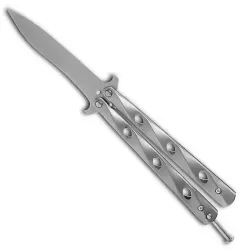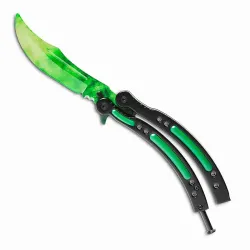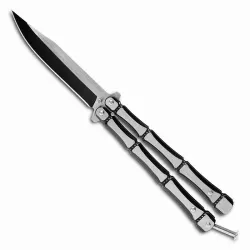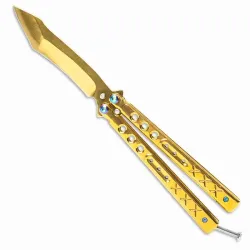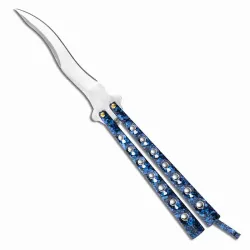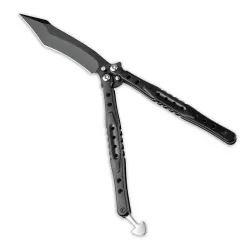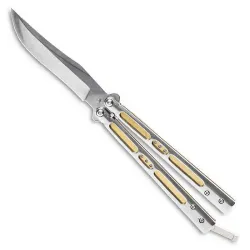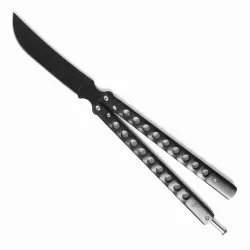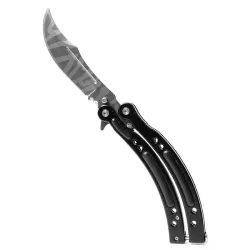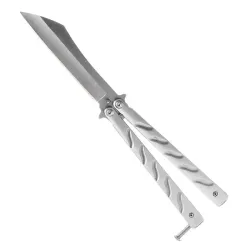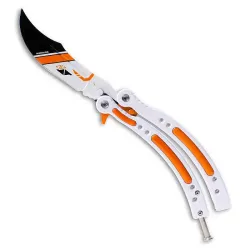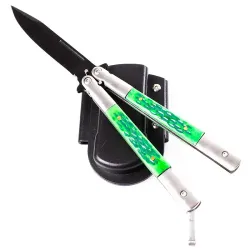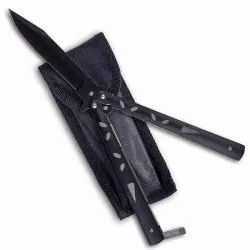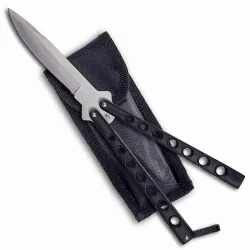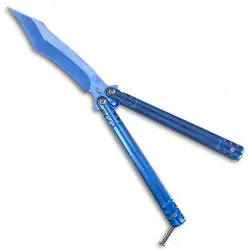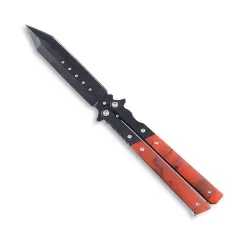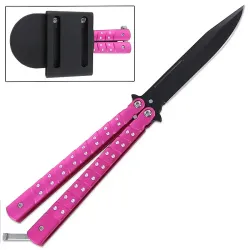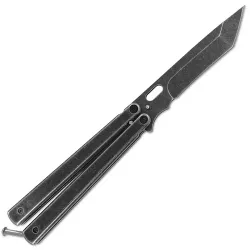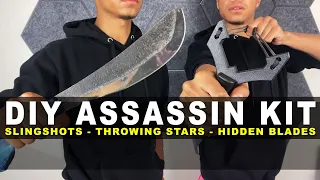Butterfly Knives & Balisongs
-
$26.95
-
$16.95
-
$22.95
-
$24.95
-
$22.95
-
$22.95
-
$22.95
-
$22.95
-
$23.95
-
$26.95
-
$22.95
-
$32.95
-
$29.95
-
$22.95
-
$21.95
-
$19.95
-
$22.95
-
$24.95
-
$24.95
-
$29.95
-
$29.95
-
$22.95
-
$23.95
-
$22.95
-
$20.95
-
$20.95
-
$19.95
-
$22.95
-
$21.95
-
$22.95
-
$29.95
-
$15.95
-
$23.95
-
$22.95
-
$22.95
-
$34.95
-
$19.95
-
$22.95
-
$20.95
-
$19.95
-
$29.95
-
$24.95
-
$24.95
-
$24.95
-
$18.95
-
$20.95
The story of the balisong starts in the Philippines, where it was used as a practical utility knife long before it became a performance tool. Most historians credit the Batangas region, south of Manila, as its birthplace. In fact, that's why the knife is often called a Batangas knife. Filipino farmers and craftsmen carried them for daily tasks like cutting rope, harvesting crops, and preparing food. But during tougher times, they doubled as compact self-defense weapons. Their quick deployment and concealability made them valuable in a world where danger could appear without warning.
Over the years, the balisong became deeply tied to Filipino martial arts systems like Eskrima, Arnis, and Kali. In close combat, speed and precision matter most, and the butterfly knife offered both. It could be opened with one hand, used for a quick strike, and then tucked away again just as fast. Even today, advanced students of Filipino martial arts still train with balisongs to sharpen timing, dexterity, and awareness. The knife's movement teaches rhythm, focus, and respect, which is why it remains a symbol of mastery in FMA culture.
Modern balisongs have evolved beyond their traditional forms, but the spirit behind them hasn't changed. You'll find everything from handmade Batangas knives with bone or hardwood handles to high-tech versions made from titanium and aircraft-grade aluminum. Some are minimalist, built purely for performance, while others are full of intricate engravings and custom finishes. Whether you're buying for function, art, or heritage, a balisong is more than just a knife. It's a piece of living history that's still inspiring flippers and collectors around the world.
One of the most exciting parts of butterfly knife culture today is flipping. This style of knife manipulation has grown into a global art form. Watching a skilled flipper move is like seeing a dance between precision and motion. The way the handles spin, catch, and close has its own rhythm that feels almost hypnotic. Beginners usually start with trainer balisongs that have dull blades, letting them practice safely while building control. Once you've got the hang of the basics, you can move on to a live blade and experience the smooth, balanced feel that makes flipping so satisfying.
At KarateMart.com, we carry butterfly knives for every level of experience. You can find classic Batangas knives, high-performance balisongs built for flipping, and durable trainers that let you practice safely. Every knife is chosen for its balance, quality, and attention to detail. Whether you're into martial arts, collecting, or just enjoy the challenge of learning new skills, our selection has something for you.
Before you buy, make sure to check your local laws. Butterfly knife regulations vary by state and country, and while many areas allow them, others classify them as restricted weapons. Always stay informed and practice responsibly. These knives were built for precision and purpose, not for reckless use.
From the villages of Batangas to the hands of martial artists, collectors, and flippers around the world, the balisong has come a long way. It's a tool that's as versatile as it is beautiful. Whether you appreciate it for its history, its mechanics, or its artistry, the butterfly knife will always stand out as one of the most iconic blades ever created.
How to Choose the Right Butterfly Knife
Choosing the right butterfly knife mostly comes down to what you want to do with it. If you are new to flipping, start with a trainer balisong. Trainers have dull blades that mimic the weight and feel of a real knife, but they let you practice without worrying about getting cut. They are perfect for learning the basics like opening, closing, and handle control. Once you are confident with a trainer, you can move up to a live blade and start building real precision.
If you are buying a balisong for martial arts, look for a model that balances speed and control. You will want one that feels solid but not too heavy, with smooth pivots and sturdy handles. A knife that locks firmly in place when open will give you more confidence during training. Collectors, on the other hand, might prefer handmade or limited-edition balisongs crafted from high-end materials like titanium or stainless steel. These pieces are built as much for beauty as for performance, and they make incredible display items.
Handle material plays a big role in how your butterfly knife feels. Aluminum handles are lightweight and quick, making them great for fast tricks. Stainless steel handles have more heft, which gives better stability and momentum. G10 and carbon fiber handles offer a nice middle ground with extra grip and a modern look. If you are not sure what you like yet, try a few different styles to see what feels best in your hand.
Size matters too. Most butterfly knives fall between 8 and 10 inches when open. Smaller ones flip faster and are easier to control, while larger knives offer a smoother, heavier feel that advanced flippers often prefer. The best choice depends on your comfort level and what you plan to use it for. The more balanced the knife feels, the better it will perform.
Whatever your reason for buying one, the key is to choose a quality balisong that feels right for you. A well-built butterfly knife will stay tight, flip smoothly, and last for years with just a little care. Whether you are practicing tricks, training in martial arts, or expanding your knife collection, the right butterfly knife will make every movement feel effortless.
Are Butterfly Knives Legal?
Butterfly knife laws can be tricky because they change from place to place. In some states, they are treated like any other folding knife, while in others they are restricted or completely banned. A lot of the confusion comes from the fact that people sometimes mistake balisongs for switchblades, even though butterfly knives require manual flipping to open. That small detail makes a big difference in how they are classified legally.
Before you buy or carry one, take a minute to check your local laws. Some states allow ownership but not public carry, and others have rules about blade length or concealed possession. If you plan to travel with your knife, check the laws at your destination too. The last thing you want is to lose your knife or face fines because of a misunderstanding. Staying informed keeps you and your gear safe.
At KarateMart.com, we encourage all customers to handle their butterfly knives responsibly. These knives are designed for precision and skill, not for reckless use or display in public areas. Always practice in safe spaces and store your knife securely when you are done using it. With proper care and respect, a balisong can be a lifelong tool, training partner, or collector's piece.
What Is the Difference Between a Butterfly Knife and a Balisong?
There is no difference between a butterfly knife and a balisong. They are two names for the same knife design. "Balisong" is the traditional Filipino term, while "butterfly knife" is the name that became popular in the United States. Both refer to a folding knife with two handles that rotate around the tang to conceal the blade when closed.
The word "balisong" comes from the Batangas region of the Philippines, where the knife originated. American soldiers brought them home after World War II, and that's when the term "butterfly knife" started catching on. Whether you call it a balisong or a butterfly knife, you're talking about the same iconic blade that's known for its smooth flipping action and clever design.
Can I Carry a Butterfly Knife in Public?
Carrying a butterfly knife in public depends entirely on where you live. Some states allow you to own and carry a balisong just like any other folding knife, while others classify it as a restricted or prohibited weapon. Even in areas where ownership is legal, there may still be limits on how and where you can carry it. Always check your state and local knife laws before taking a butterfly knife outside your home.
If your area does allow public carry, it is still smart to be discreet and responsible. Avoid carrying it in places where knives are banned, like schools, airports, and government buildings. When in doubt, store your knife safely and practice flipping at home or on private property. Staying informed and careful will keep you out of trouble while letting you enjoy your knife safely.
What Is the Safest Way to Learn Butterfly Knife Tricks?
Start with a trainer and take it slow. Trainers mimic the weight and feel of a real balisong but have a blunt blade, so you can learn the motion without cutting yourself. Practice basic openings and closings until those movements feel automatic before you try anything flashy.
Pick a soft practice area and protect your knife. Stand over carpet, grass, or a bed so drops do less damage. Keep the practice area clear of people and pets. Use a small tool kit and check screws and pivots often so nothing flies apart mid-flip. Work on one move at a time, break it down into steps, and repeat each step slowly until your hands remember it. Video yourself or watch slow motion tutorials to spot mistakes in your form.
Learn the safe handle and the bite handle and always start drills by holding the safe handle. Consider wearing thin protective gloves while you are building confidence. Keep a first aid kit nearby for minor cuts and treat every slip as a learning moment. When you move from a trainer to a live blade, go back to the basics and increase speed only after you can perform the move perfectly at slow pace. Steady practice beats reckless showing off every time.
Should I Start With a Trainer Butterfly Knife?
Yes. Starting with a trainer is the safest and smartest way to learn. A trainer looks and feels like a real balisong but has a blunt, unsharpened blade so you can learn openings, closings, and basic tricks without slicing your fingers. That early practice builds muscle memory and confidence much faster than trying to learn on a live blade.
When choosing a trainer, pick one that matches the weight and balance of the real knives you plan to use later. Metal-handled trainers give a closer feel than cheap plastic ones. Practice consistently, protect your practice area, and treat the trainer like a real knife so your habits transfer cleanly when you move to a live blade. Consider a latching trainer so you can learn safe carry positions too.
How Do I Clean and Maintain a Balisong?
Regular cleaning makes a huge difference in how a butterfly knife flips. Start by wiping down the handles and blade with a soft cloth to remove surface dirt and sweat. If your knife comes apart easily, remove the latch and handles and use a cotton swab or small brush to get into the pivots and tang area. Compressed air can help blow out stubborn lint and dust.
A drop of quality knife oil on each pivot is usually all you need. Work the handles back and forth to spread the oil, then wipe away excess so it does not attract grit. If your knife uses bushings or washers, keep an eye on them for wear. Replace them if they become thin or damaged. For screws that back out over time, tighten them a small amount and consider a removable threadlocker like the blue Loctite to keep them in place.
If the blade is dirty or has fingerprints, clean it with a mild solvent or a gentle dish soap and water, then dry it thoroughly to prevent rust. For carbon steel blades, apply a light coat of oil before storing. Avoid harsh abrasives that can damage coatings or finishes. And finally, inspect your knife regularly for loose screws, bent latches, or uneven wear. A quick tune up every few months keeps your balisong reliable and safe to flip.
What Size Butterfly Knife Should I Buy?
Size comes down to comfort and what you want to do with the knife. Most balisongs fall in the 8 to 10 inch range when open. Smaller knives flip faster and are easier to control for beginners, while larger knives feel heavier and more stable for advanced tricks and tactical use.
Think about your hand size and what feels right when you hold the closed knife. If it feels cramped in your palm, it will be awkward to flip. If it feels bulky, you will tire faster during long practice sessions. Try a few sizes if you can, or start with a mid-size model around 9 inches open. That size tends to be forgiving and works well for learning and general use.
Also consider blade length and local laws. Some areas restrict blade length or have rules about concealed knives, so check regulations before you buy. Finally, remember that balance matters as much as overall length. A well balanced 8 inch knife can outperform a poorly balanced 10 inch one, so prioritize feel and pivot quality over raw size.
Can I Use a Butterfly Knife for Self-Defense?
Technically a butterfly knife can be used for self-defense, but it is not the best first choice. Using any knife defensively requires training, clear legal understanding, and a willingness to accept serious consequences if you use it on another person. In a stressful situation, fine motor skills decline and flipping or deploying a balisong quickly and safely becomes much harder than it looks. If your goal is personal safety, nonlethal options and avoidance strategies are usually smarter and safer choices.
If you still plan to carry a balisong, know the law where you live and train seriously with a qualified instructor. Practice safe carry methods so the knife cannot be accessed by others or accidentally opened. Remember that even a well-placed defensive action can lead to legal or civil trouble, so treat any weapon responsibly and only as a last resort.
What Makes Batangas Butterfly Knives Special?
Batangas balisongs are the classic, traditional style that started the whole thing. They often use local materials like hardwoods, bone, or brass for the handles and are built with a focus on handcraft and heritage. The look and feel are different from modern production models because they tend to be heavier in the handles and have a simpler, more rugged construction.
What really sets Batangas knives apart is the history and the way they were made by local artisans. Many are pieced together by hand with pins and simple fittings instead of machined screws and bushings. That gives them a unique character and a different swing that collectors and traditionalists love. If you want a knife that has cultural value and a story behind it, a Batangas-style balisong is a great choice.
Can I Travel With a Butterfly Knife on an Airplane?
No. You generally cannot bring a butterfly knife on an airplane in carry-on luggage. TSA and most international aviation authorities classify folding knives with fixed blades that can be opened quickly as prohibited items in the cabin. Even checked luggage can be risky depending on the country you are flying to or through, so do not assume it is allowed.
If you must travel with a balisong, pack it in checked baggage and secure it properly in a locked case. Check the airline policy and the laws for every country and state on your route before you fly. When in doubt, leave the knife at home or ship it ahead to avoid fines, confiscation, or legal trouble.
Why Are Butterfly Knives Banned in Some States?
Butterfly knives are banned or restricted in some places mainly because of how they look and how quickly they can be opened. Lawmakers often lump balisongs in with other easily deployable blades and see them as higher risk for public safety. That concern gets amplified when politicians or news stories focus on their flashy use in movies or street incidents, which can lead to stricter rules.
Another reason is legal definitions. Some state laws are written around terms like switchblade or gravity knife, and a balisong can fall into those categories depending on the wording. Even though a balisong opens manually, some statutes are vague enough that enforcement can treat them like prohibited items. That legal fuzziness is why you see different outcomes from state to state or even city to city.
Finally, policy tends to follow public perception. Items that look intimidating or are associated with criminal use often face tougher regulation, even if they also have legitimate uses. That is why it is so important to check the exact language of local laws before you buy or carry a butterfly knife. Understanding the rulebook protects you and keeps your hobby legal and hassle free.
Are There Different Types of Balisongs?
Yes. Butterfly knives come in a few main styles that change how they are built and how they flip. The two most common are sandwich-style and channel-style balisongs. In a sandwich-style knife, the handles are made from two separate slabs with a space in between for the blade and hardware. This design makes it easier to take apart, clean, and tune. Many high-end modern balisongs use this construction.
Channel-style balisongs, on the other hand, are made from a single solid piece of material with a channel cut down the middle for the blade to rest in. This design is stronger and often preferred for heavy flipping or traditional builds, but it is harder to disassemble. Traditional Batangas knives usually use channel-style handles, while newer models often lean toward sandwich-style builds.
You'll also see other variations like latchless balisongs, bearing pivots, and trainer models. Each type has its own feel and purpose. Collectors tend to enjoy both for their unique balance and history, but for everyday flipping, the style you choose comes down to preference. Try a few types and see which design feels the most natural in your hand.
Are There Left-Handed Butterfly Knives?
Yes and no. Most balisongs are built symmetric so they work for both right- and left-handed users, which means many people can flip them comfortably with either hand after some practice. The pivots, latch, and overall balance are usually centered, so the knife itself is not strictly right- or left-handed.
That said, a few details can make one knife feel better for lefties. Some balisongs have a latch positioned for right-handed carry or a thumb swell on one side of the handle that favors one hand. There are also custom makers who will adjust latch placement, handle shape, or blade profile to suit a left-handed flipper. If you are left-handed and you want the best feel straight away, try a few models or look for knives with reversible latches and neutral handle contours. Those tend to be the most friendly to both left- and right-handed users.





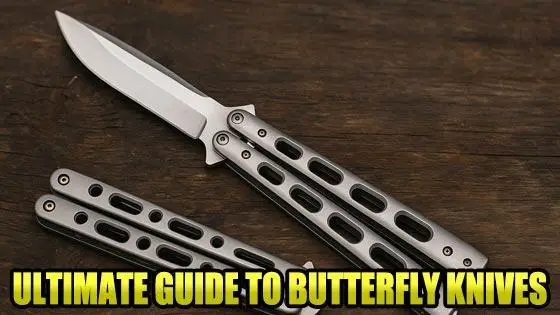
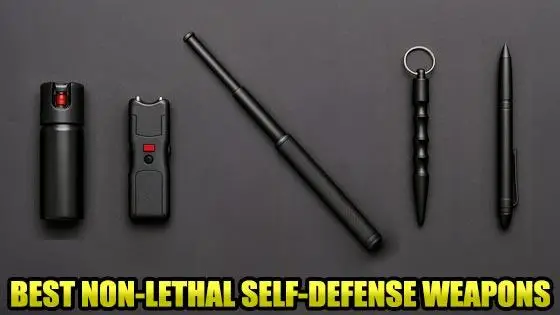
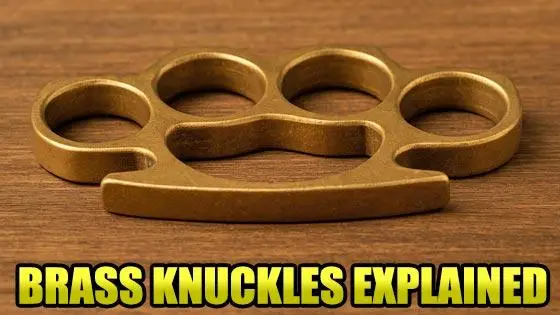
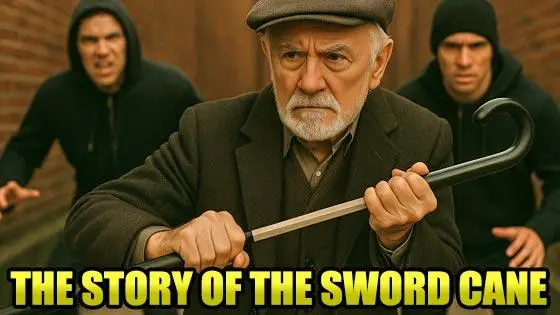
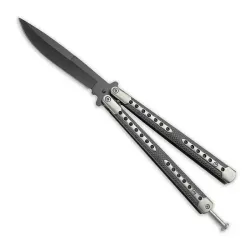
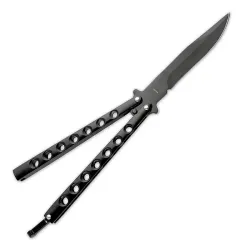
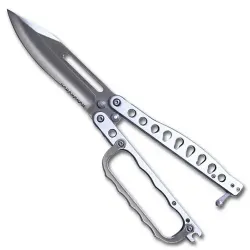
 (2)
(2)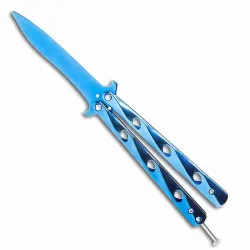
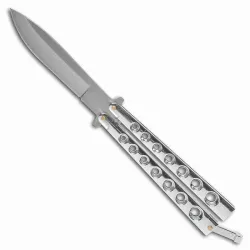
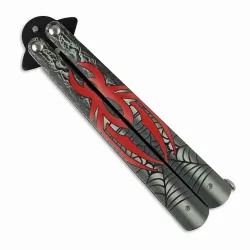
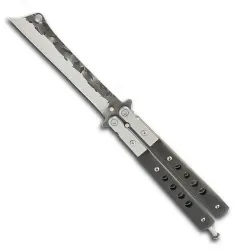
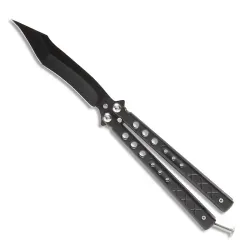
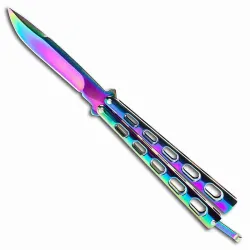
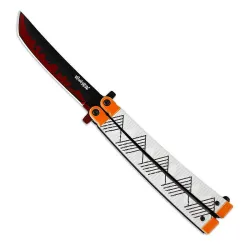
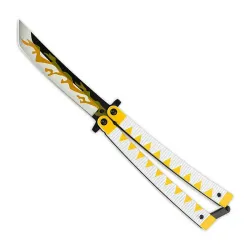
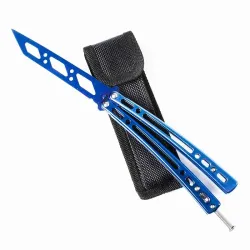
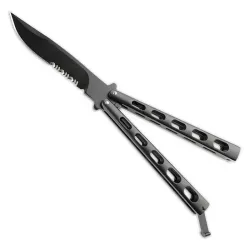
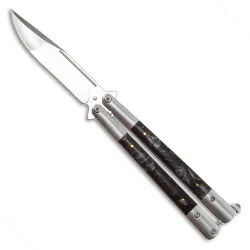
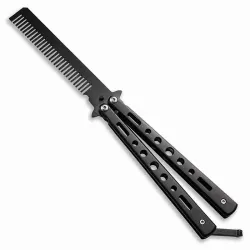
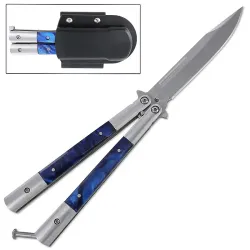

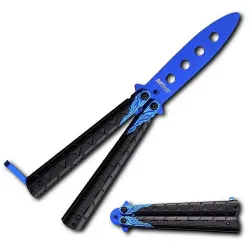
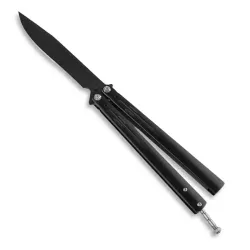
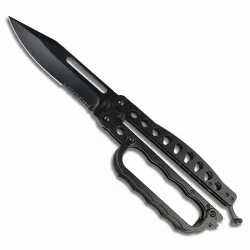
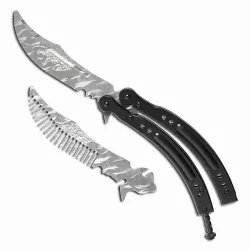
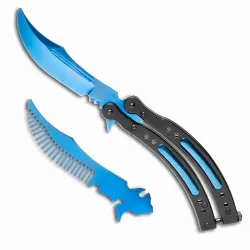

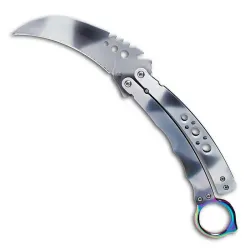
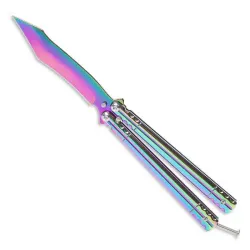
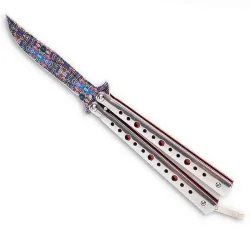
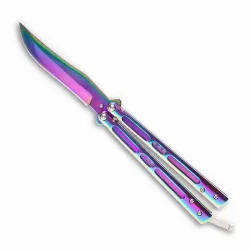
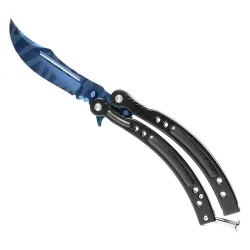
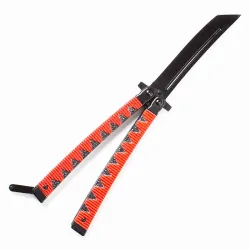
 (1)
(1)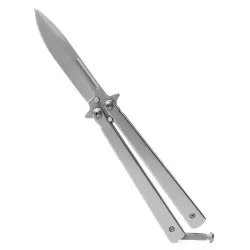
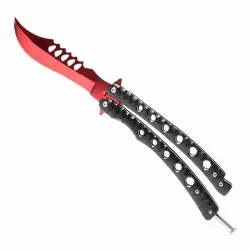
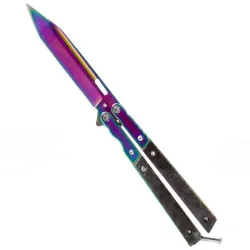
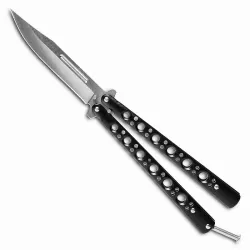
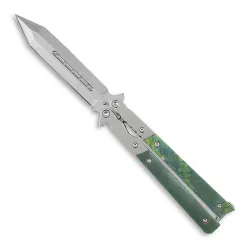
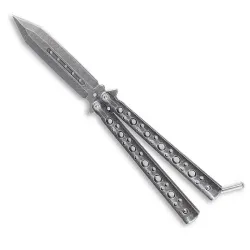
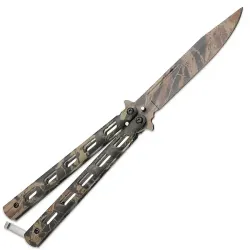
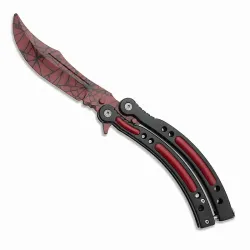
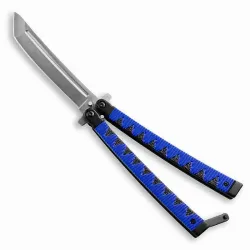
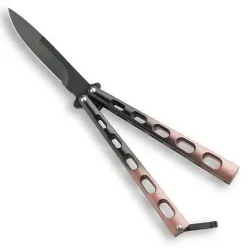
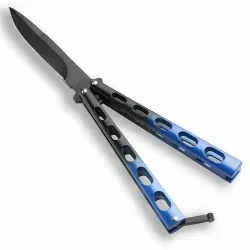
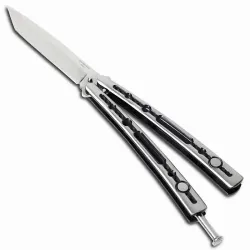
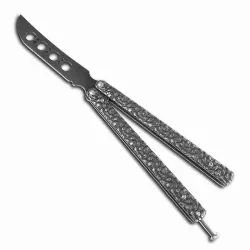
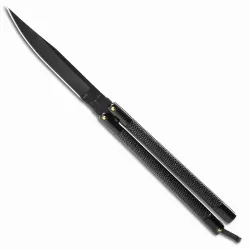
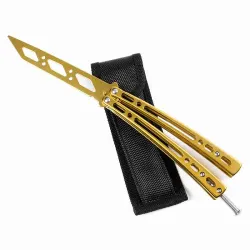
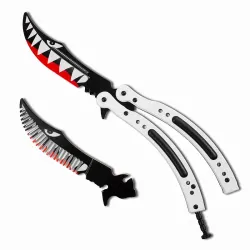
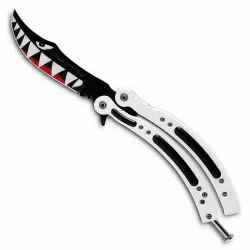
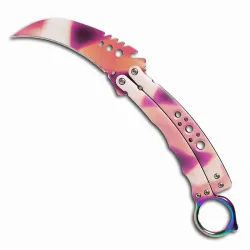
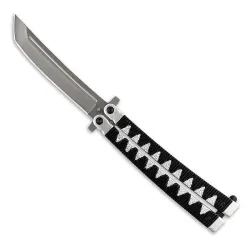
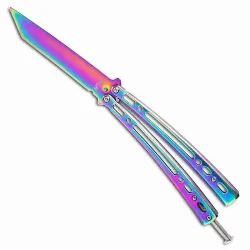
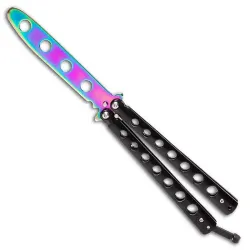
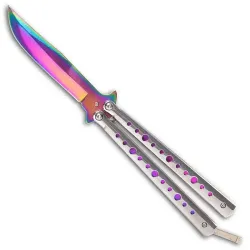
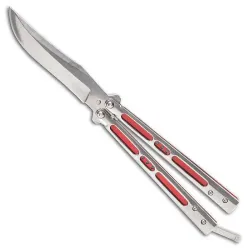
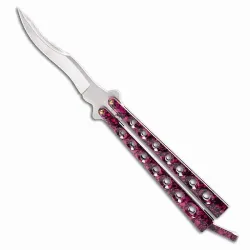
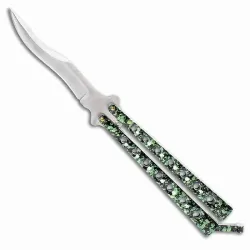
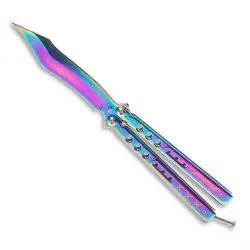
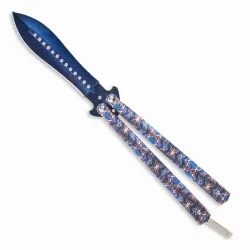
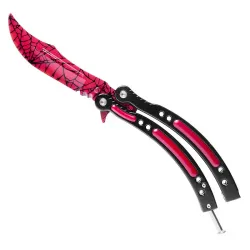
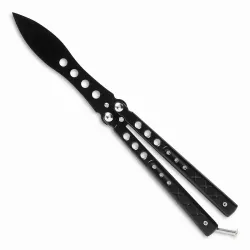
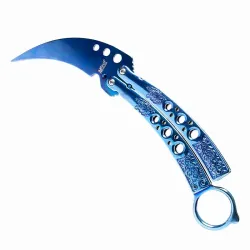
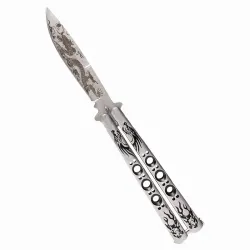
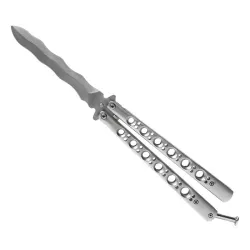
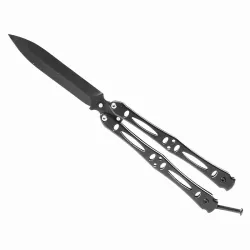
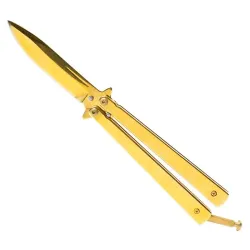
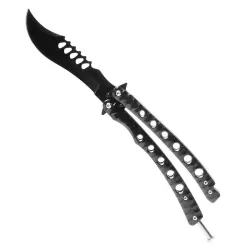
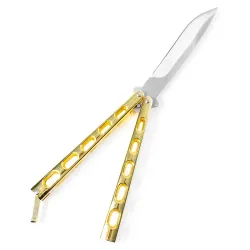
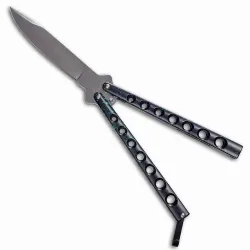
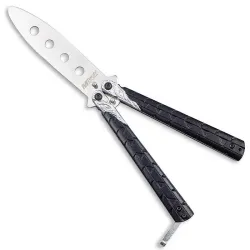

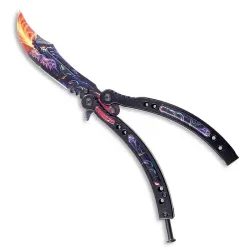
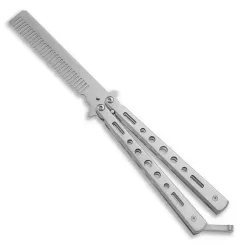
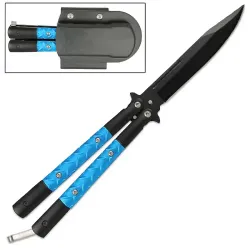
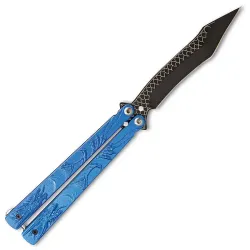
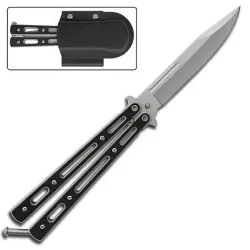
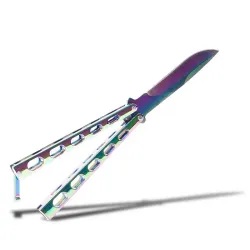
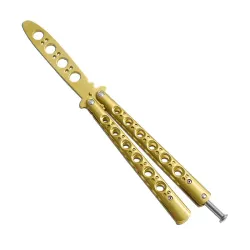
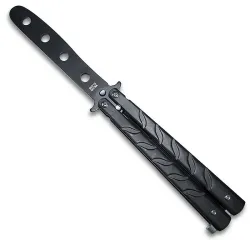
 (2)
(2)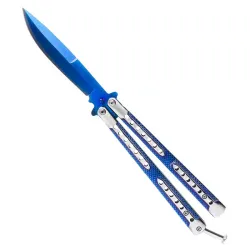
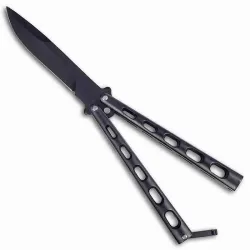
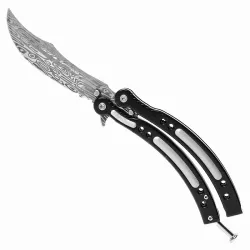
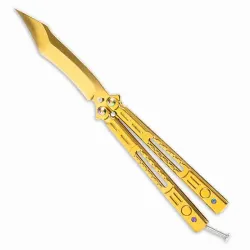
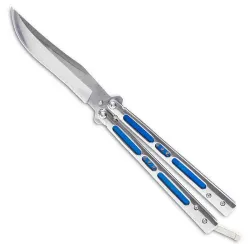
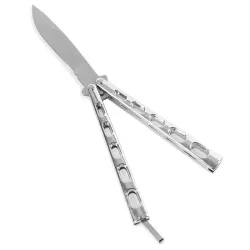
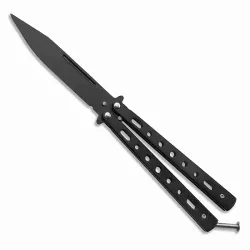
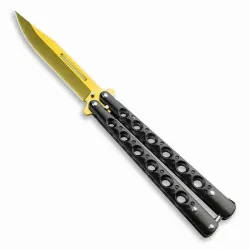
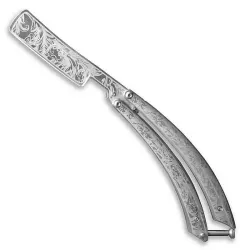
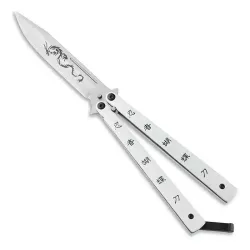
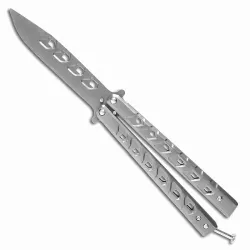
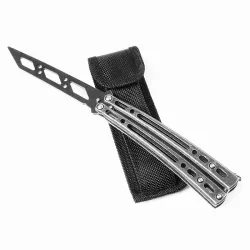
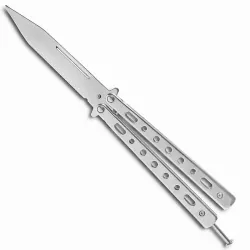
 (1)
(1)